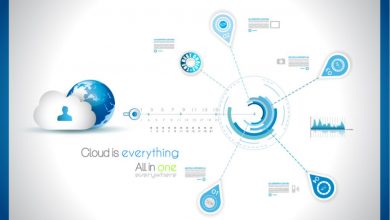
Cisco embraces Gartner’s secure-access service edge (SASE) architecture with plans to upgrade some of its existing products to achieve the goal of providing cloud services with access control, security, and networking.
Cisco is of the view that the company’s movie to SASE will be gradual as it finds the best way to link its increasingly dispersed employees with distributed resources from corporate data centers and as cloud providers.
“Flexibility will be fundamental as IT chooses among multiple security and networking capabilities that best fit their operations, regulatory requirements, and types of applications,” said Jeff Reed, Senior Vice President of Product, Cisco’s Security Business Group in a blog post. “Security services can be predominantly delivered from the cloud to provide consistent access policies across all types of endpoints. However, globally distributed organizations may need to apply security and routing services differently according to regional requirements.”
Reed stated that secure access and optimal performance are a must. “The rapid adoption of SD-WAN for connecting to multi-cloud applications provides enterprises with the opportunity to rethink how access and security are managed from campus to cloud to the edge,” he stated. “With 60% of organizations expecting the majority of applications to be in the cloud by 2021 and over 50% of the workforce to be operating remotely, new networking and security models such as SASE offer a new way to manage the new normal.”
SASE’s aim, according to Reed, is to provide safe access to applications and data from on-site data centers or cloud systems, with access determined by identities identified by combinations of features like individuals, groups, devices, locations, and services.
Service edge refers to global PoP (points of presence), IaaS, or colocation facilities where local branch and endpoint traffic is secured and transmitted to the appropriate destination without first traveling through corporate data centers. Organizations will now be able to connect securely any customer or device to any application, thus optimizing experience by delivering security and network services together from the cloud, Reed stated.
To support this system, Cisco said it would gradually improve and incorporate a range of networking and security products, including its networking software SD-WAN, Safety Umbrella, and Identity and Access Zero Trust.
Experts expressed their views by probing the SASE process, which is just in the beginning phase.
“SASE is definitely a journey, not a product, and it won’t be sorted out quickly,” said Lee Doyle, Principal Analyst at Doyle Research and Network World contributor. “Cisco has embraced the SASE terminology, and the company is uniquely positioned in that it has the strengths in network and security technologies needed to build it out,” Doyle said.
Data management and data analytics are an essential part of how manufacturers conduct business. Previously, data was noted on paper or analyzed in the spreadsheets. However, it is now collected automatically via sensors and analyzed with tools that far exceed the capabilities of spreadsheets.
ABI Research predicts that in 2026, manufacturers and industrial firms will be spending USD 19.8 billion on data analytics, data management, and associated professional services.
“For many manufacturers, there is an appreciation that operational decisions need to be based on empirical evidence rather than guesswork. The challenges are not necessarily capturing and analyzing data, rather what to analyze in the first place,” said Michael Larner, Principal Analyst at ABI Research. “The findings need to have a meaningful impact on operations and so manufacturers need to take a step back and devise precise objectives,” he added.
Predictive maintenance is crucial for avoiding downtime and enhancing safety on the factory floor. And the video inspection feature of the software captures defects more perfectly compared to the human eye.
The report suggests that using data analytics helps in increasing production, improving quality, and reduction of waste. Analyzing data has become more sophisticated with newer technologies such as machine learning and artificial intelligence. The report also mentions that suppliers are not just able to report data but also predict outcomes and make recommended actions.
Additionally, the advent of low/no code platforms has helped staff to use analytics easily, without a technical representative’s help.
Larner concluded, “While manufacturers have spent decades refining their physical production lines, today they need to expend effort in optimizing their processes for collecting and analyzing data. But data should not be collected just for the sake of it.”
Newsletter

Sign up for MartechBusiness
As a subscriber you will receive alerts and free access to our constantly updated library of white papers, analyst reports, case studies, web seminars and solution reports.




